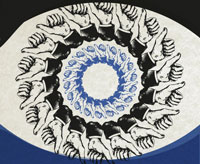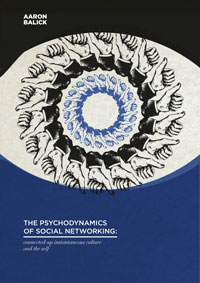 Joyce Slochower (USA)
Joyce Slochower (USA)
Two books released in Second Editions:
Holding and Psychoanalysis
Is there a baby in the relational consulting room? How and when can/should we try to hold our patients? What happens to the analyst’s subjectivity when she tries to hold?
In Holding and Psychoanalysis: A Relational Perspective (second Edition), Joyce Slochower brings a contemporary relational framework to bear on Winnicott’s notion of the holding environment. Revisiting the clinical impact and theoretical underpinnings of holding, Slochower explores its function in those moments when “ordinary” interpretive or interactive work cannot be tolerated. Slochower expands the holding construct beyond the needs of dependent patients by examining its therapeutic function across the clinical spectrum. Emphasizing holding’s coconstructed nature, Slochower explores the contribution of both patient and analyst the holding moment.
This second Edition introduces new theoretical and clinical material, including four additional chapters. Two of these address holding’s impact on the patient’s capacity to access, articulate and process affect states; the third moves outside the consulting room to explore how holding functions in acts of memorial ritual across the lifespan. A final chapter presents Slochower’s latest ideas about holding’s clinical function in buffering shame states.
Integrating Winnicott’s seminal contributions with contemporary relational and feminist/psychoanalytic perspectives, Joyce Slochower addresses the therapeutic limitations of both interpretive and interactive clinical work. There are times, she argues, when patients cannot tolerate explicit evidence of the analyst’s separate presence and instead need a holding experience. Slochower conceptualizes holding within a relational frame that includes both deliberate and enacted elements. In her view, the analyst does not hold alone; patient and analyst each participate in the establishment of a co-constructed holding space. Slochower pays particular attention to the analyst’s experience during moments of holding, offering rich clinical vignettes that illustrate the complex struggle that holding entails. She also addresses the therapeutic limits of holding and invites the reader to consider the analyst’s contribution to these failures. Slochower locates the holding process within a broader clinical framework that involves the transition toward collaboration—a move away from holding and into an explicitly intersubjective therapeutic frame.
Holding and Psychoanalysis offers a sophisticated integration of Winnicottian and relational thought that privileges the dynamic impact of holding moments on both patient and analyst. Thoroughly grounded in case examples, the book offers compelling clinical solutions to common therapeutic knots. Clearly written and carefully explicated, it will be an important addition to the libraries of psychoanalysts and psychoanalytic psychotherapists.
http://www.taylorandfrancis.com/books/details/9780415640701/
Psychoanalytic Collisions
Psychoanalytic Collisions Second Edition wrestles with a theme that confronts every psychotherapist: the gap between illusions and realities about the professional self. Joyce Slochower closely examines situations in which the therapist’s professional and personal wishes collide with the actuality of everyday clinical work. The book unpacks the dynamics of these collisions on both beginning and seasoned therapists, offering ways of sustaining a professional ideal while also exploring the mixed impact of that ideal on clinical work. In examining how illusions and ideals affect the therapeutic encounter for both better and worse, Psychoanalytic Collisions invites the reader into the consulting room.
This Second Edition has been substantially revised. It includes updated clinical and theoretical material as well as a new chapter about mutual idealizations that coalesce between patient and analyst. Slochower argues that psychoanalytic collisions can be productively engaged, even if they often cannot be fully resolved.The very act of engagement—whether by establishing new grounds for collaboration in the wake of real-world catastrophe, wrestling with clinical impasses that arise from the divergent expectations of analyst and patient, or owning up to and addressing the analyst’s “secret delinquencies”—reveals how therapeutic hopefulness can coexist with an acceptance of the analyst’s all-too-human fallibility.
Psychoanalytic Collisions shows how idealization is intrinsic both to forging an analytic identity and practicing across a lifetime. Slochower’s work challenges readers to confront their own vulnerabilities and limits while also embracing a professional ideal that is at once human and inspiring. The book is an essential resource for psychoanalysts, psychotherapists, pastoral counselors, and readers interested in the practice of psychotherapy today.
http://www.taylorandfrancis.com/books/details/9780415813396/
















